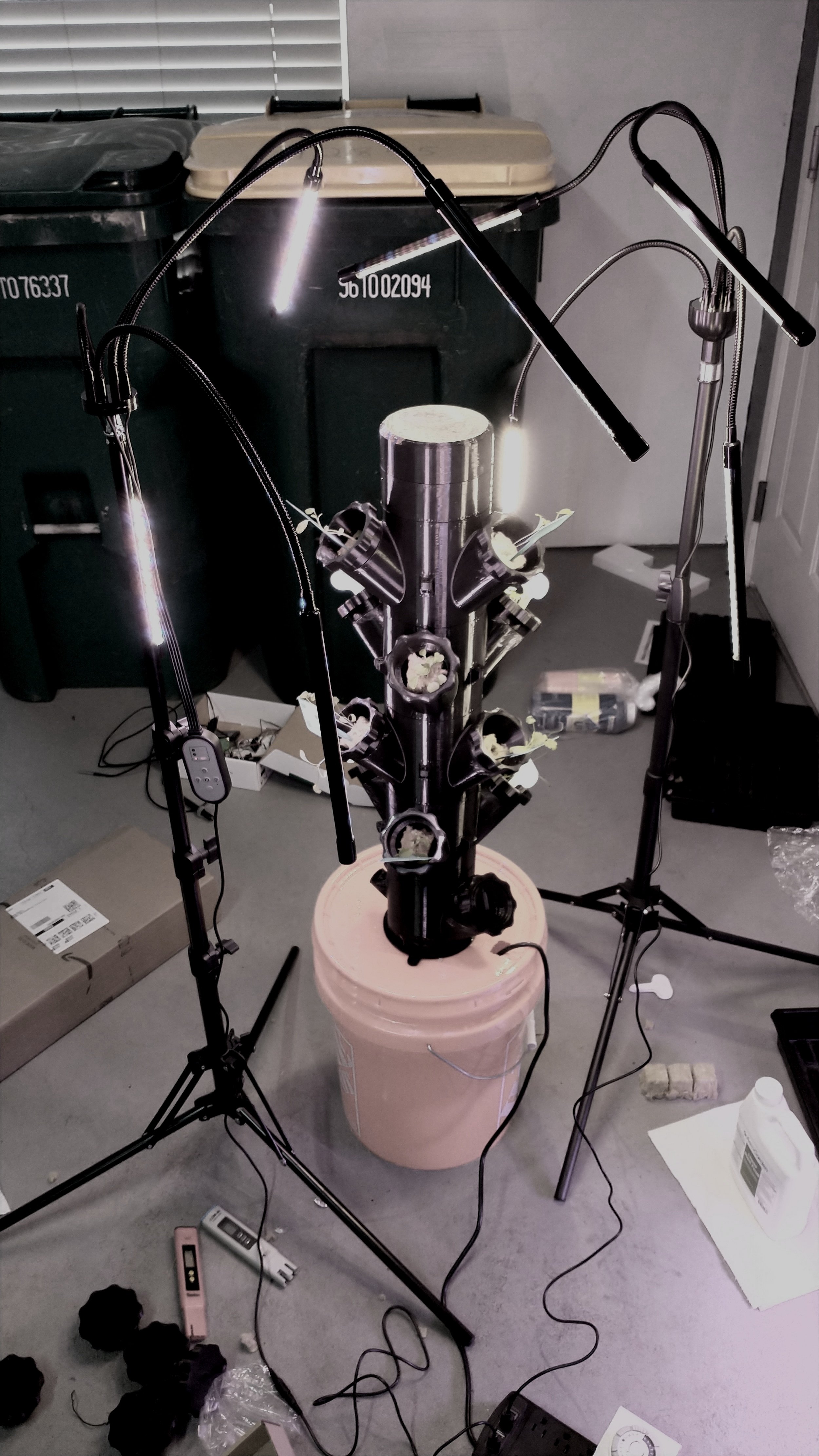
Hydroponics System
Summary
In order to grow various greens and herbs during the winter time, I built two different hydroponics setups and automated the controllable inputs using an Arduino. The vertical tower proved difficult to light, so I went with a horizontal setup to allow for good lighting and greater yield.
Skills Utilized
Arduino
Coding a control circuit for nutrient concentration
Soldering, circuit design, hardware selection
Sensor calibration
Fluid system design (pump sizing, fitting selection, etc.)
3D printing
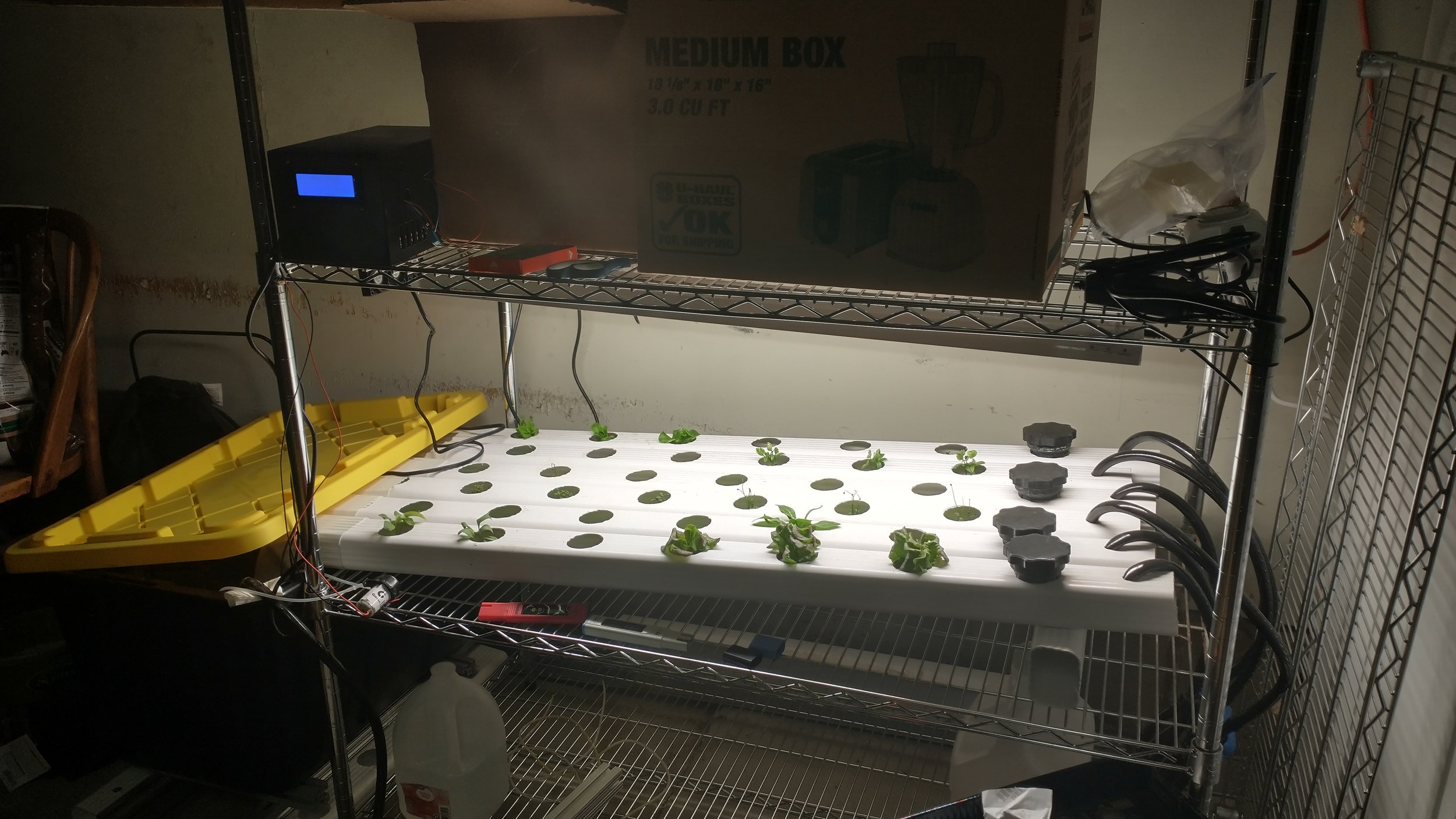
The new setup with the Arduino system and a larger reservoir.
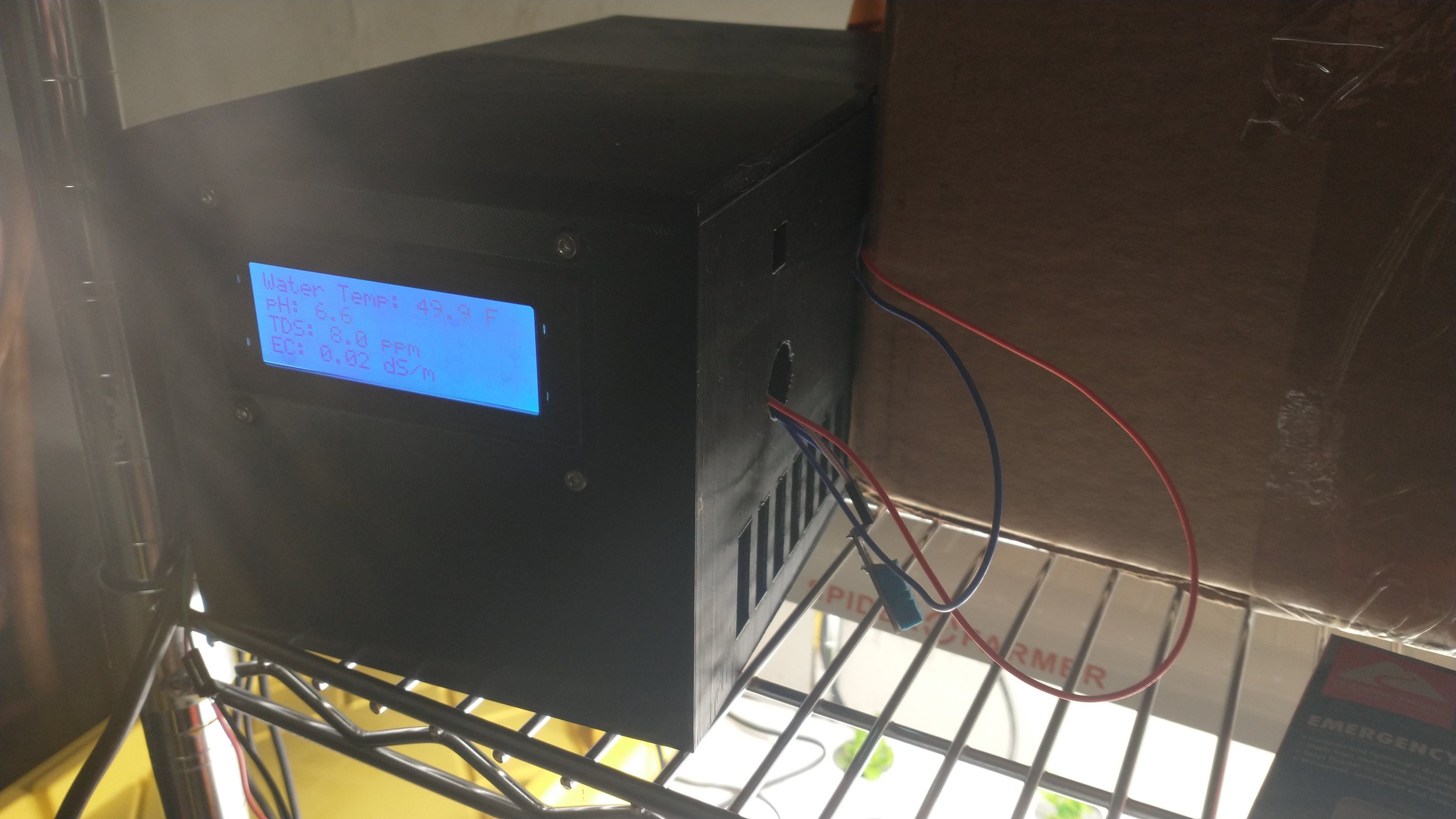
The Arduino system enclosure houses a 24V power supply for fans and pumps, as well as an Arduino, LCD, and breadboard to connect all the sensors and pumps to the Arduino. This system can measure water/air temp, humidity, nutrient concentration, and pH. A nutrient pump can be turned on if the value gets too low, and fans can be activated if the humidity is too high.
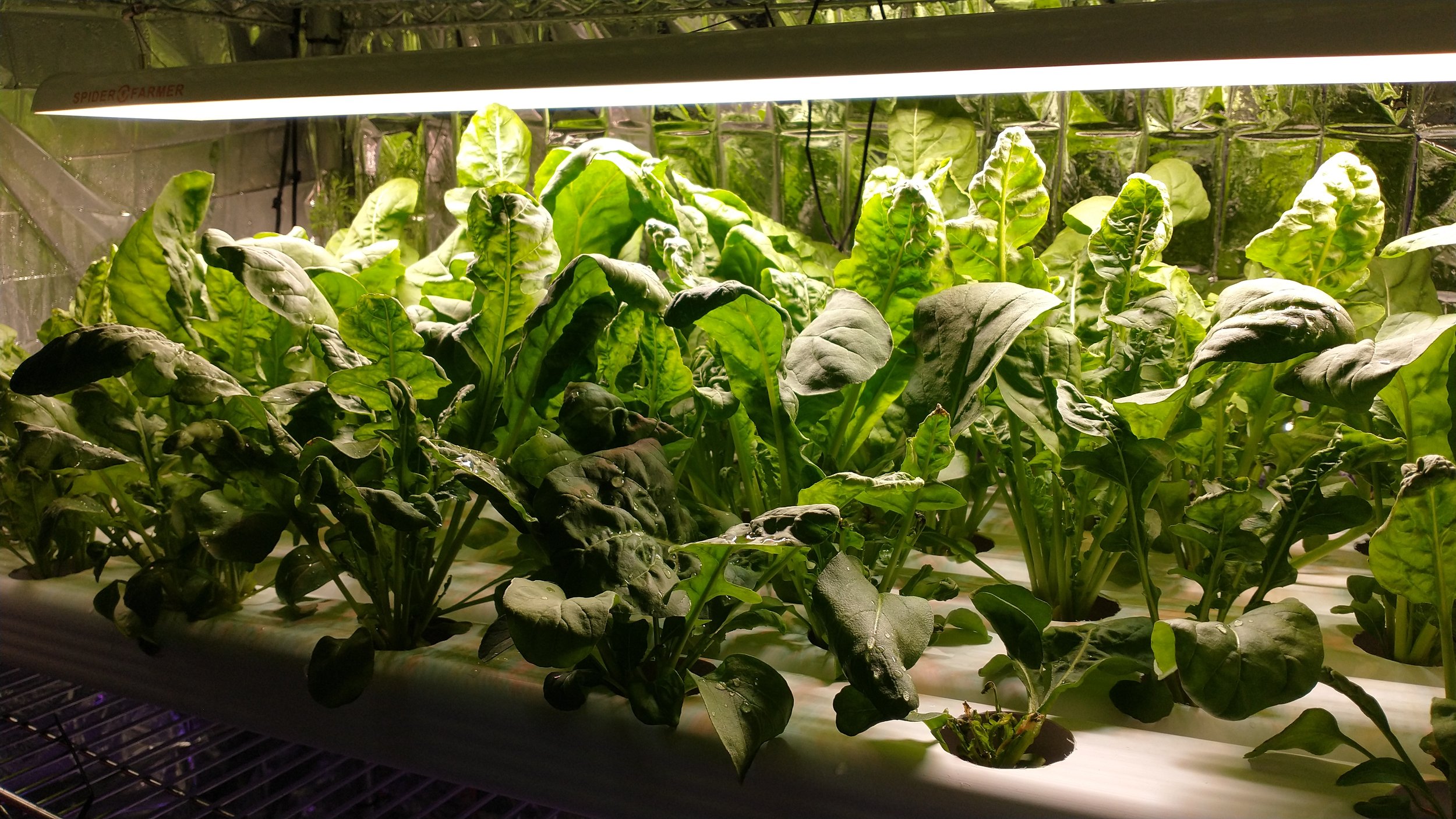
A close up of the NFT system after roughly 3 weeks of plant growth. The arugula plants in this photo are ready to harvest.

The system on the right is insulated with space blankets to keep heat and humidity in when the garage gets too cold.
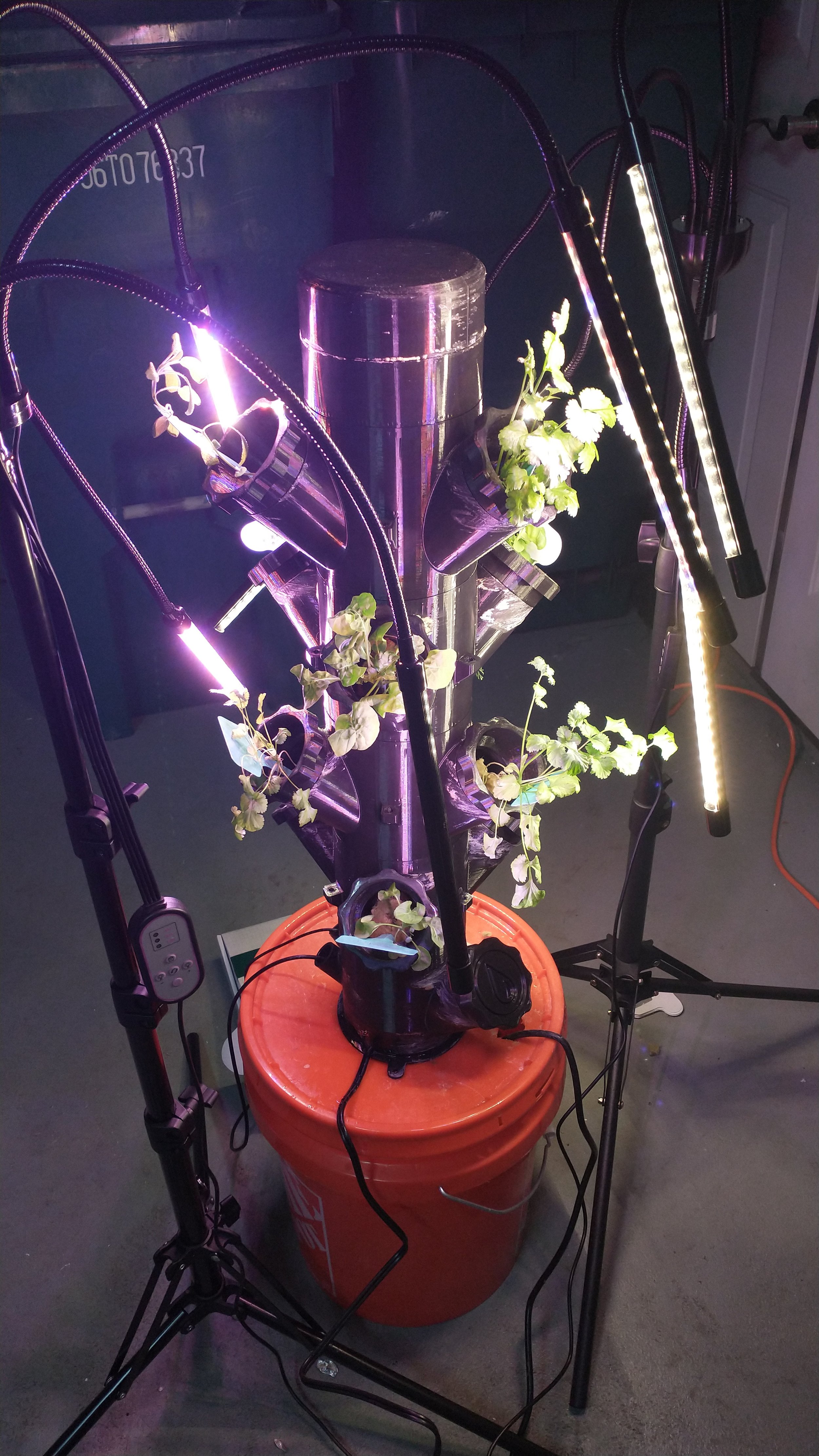
The vertical tower setup. Sage can be seen at the top left, and cilantro and arugula occupy the remaining spaces. Note how the plants closer to stronger light have grown significantly more.

Propagation domes for germinating seeds. These consist of a clear plastic lid to retain humidity but allow light through, as well as a heating mat to keep the seedlings at a suitable temperature.
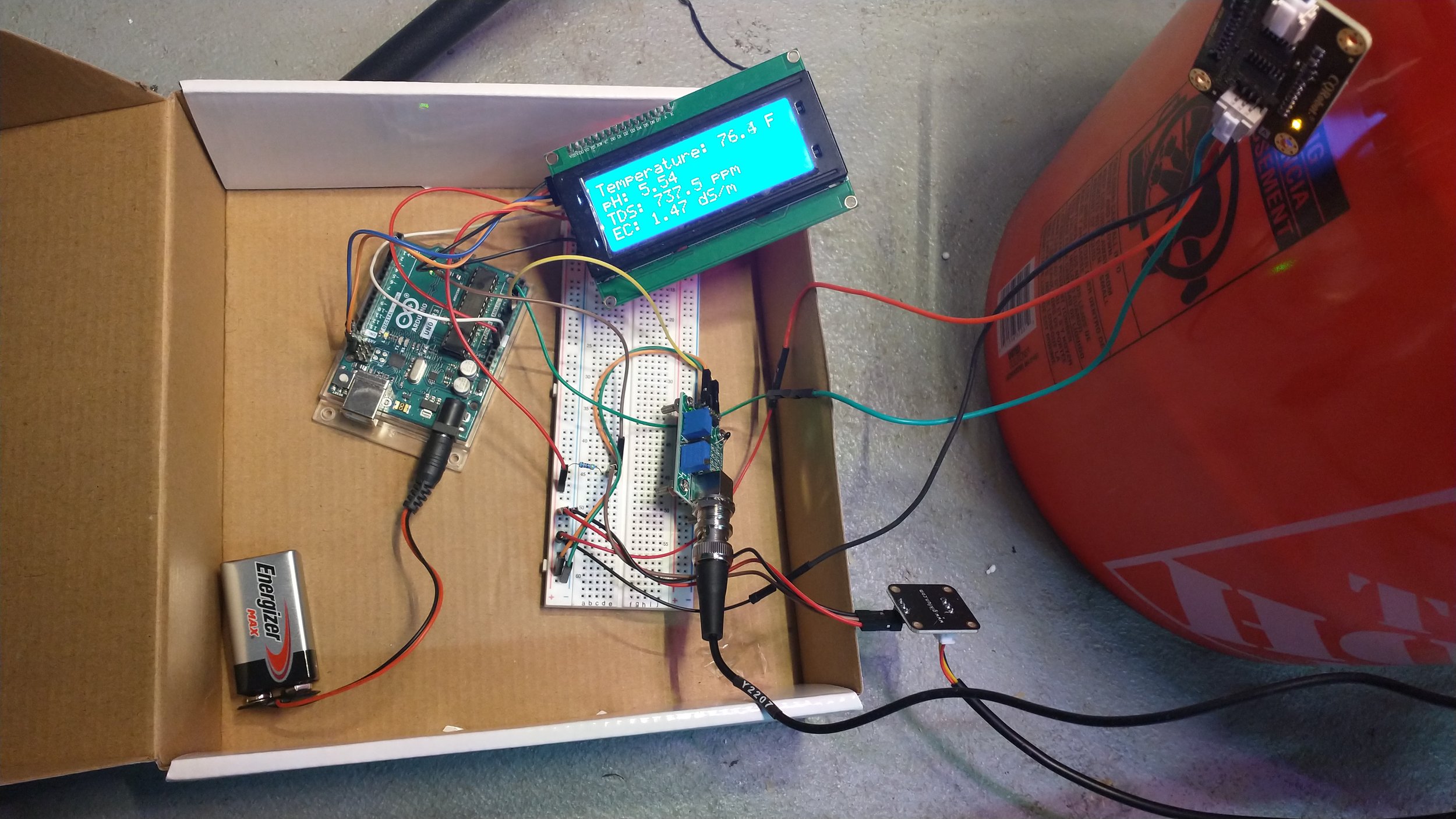
The exposed Arduino system, including a nutrient concentration, pH, and temperature readout.